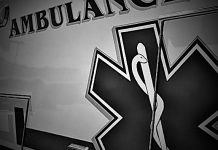
Oct. 24 (UPI) — A new study is highlighting a problem with teenagers, the underreporting of amphetamine use mainly due to lack of knowledge of which drugs are amphetamines.
Amphetamine is the most common stimulant drug prescribed in the United States for attention deficit/hyperactivity disorder. Two of the most commonly prescribed drugs for ADHD are Ritalin and Adderall.
Due to the ability of these drugs to enhance cognitive function, focus and ultimately academic performance, many high school and college students take the drugs for nonmedical use, a dangerous practice that can lead to abuse, dependency, cardiovascular events and seizures.
The study, published in the October edition of Drug and Alcohol Dependence, was conducted by the Center for Drug Use and HIV/HCV Research at New York University Meyers College of Nursing.
Researchers analyzed data from more than 24,000 high school seniors questioned in the Monitoring the Future study from 2010-2015 regarding nonmedical Adderall use and nonmedical amphetamine use.
“Our findings suggest that many young people are unaware that Adderall is amphetamine,” Joseph Palamar, an associate professor of population health at NYU Langone Health, said in a press release. “In addition, such conflicting reports mean that prescription stimulant misuse may be underestimated.”
Roughly 6.9 percent of teens said they used Adderall for nonmedical purposes, 7.9 percent said they used amphetamine for nonmedical purposes, however, 28.7 percent of those surveyed who reported nonmedical Adderall use also reported no amphetamine use for nonmedical reasons.
Of those reporting nonmedical Adderall use and no nonmedical amphetamine use, older students over age 18, African American students and those whose parents had a lower level of education were the most likely to fall into that category.
“Over a quarter of teens who reported using Adderall without a doctor telling them to take it contradicted themselves by saying they do not use amphetamine,” Palamar said. “As a result, the estimated prevalence of nonmedical amphetamine use of 7.9 percent may be an underestimate; it may be as high as 9.8 percent, or one out of 10 high school seniors, when considering the discordant reporting we found.”





